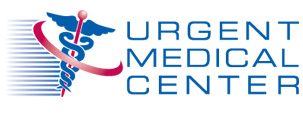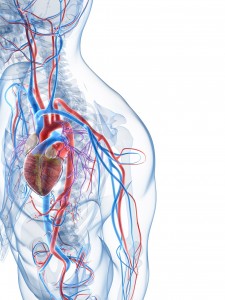 Important Organs: How Does Your Heart Work?
Important Organs: How Does Your Heart Work?
Your heart weighs about 8-10 ounces and is situated slightly to the left behind your breastbone. Clench your fist to help visualize about how large your heart is. Your fist isn’t huge by any means, but if you completely untangled the intricate system of blood vessels streaming to and from your heart, they could wrap around the entire world over two times! That’s a lot of blood vessels with a big job to do. Your heart beats over 100,000 times each day, and every 20 seconds vessels filter a new cycle of oxygen-rich blood throughout your body.
So how does the whole process really work? And what causes your heart to have an actual pulse? Here we answer all of your questions about how the heart works and why it is such an amazing organ in the human body. Plus, why it is important to take care of your heart and seek medical attention for any signs of a possible heart condition.
What Does Your Heart Really Look Like?
Your heart is not the shape of an actual heart, nor is it one solid space. Your heart is divided into 4 different sections. Right down the center is your septum, or the inner wall inside of your heart that separates the right and left sides. These sides are then broken up horizontally into a total of 4 separate chambers. The “upper chamber” is referred to as the atrium and the “lower chamber” is known as the ventricle.
How Does The Human Heart Work?
When blood filters through your lungs it becomes rich with oxygen, at which point the right side of your heart takes charge and pumps blood from your lungs into your heart. The left side of the heart is then responsible for pumping this oxygen rich blood out and into the rest of your body before it cycles back through the right side of your heart and into your lungs again and again.
Why Do I Have A Heartbeat?
You have a heartbeat because you are alive, but also because of electrical pulses your body naturally produces using your cardiac conduction system—or, the muscles that line the walls of your heart. These muscles have 5 different parts to them.
1. The sinoatrial node is what actually causes the heart to beat in regular intervals. Often referred to as the heart’s natural “pacemaker,” cells generate electricity by constantly changing from a positive to a negative charge. The electricity continues to flow from cell to cell, regenerating with every heartbeat.
2. The atrioventricular bundle, or bundle of His, are the muscle fibers that regulate these electrical impulses.
3. The atrioventricular node is located near the middle of the heart, between the lower and upper heart chambers. This is where electrical pulses are first transferred.
4. Bundle Branches connect from the atrioventricular node to lower ventricles.
5. Purkinje fibers are located between the inner walls of your heart and actually synch your heartbeat so that it has a consistent rhythm.
When all 5 of these parts are actively working together your heart should beat healthy and strong.
What’s The Aorta—Is It Connected to the Heart?
Aorta—a term you might know but not quite understand. As the largest artery in the entire body, the aorta is a vessel located on the left side of your heart that pumps fresh blood from your heart into your body. The aorta is shaped like an arch and extends to your stomach, at which point it splits into two thinner arteries.
Why Is Exercise Important For Your Heart Health?
When you exercise your lungs are forced to work harder and so is your heart. The more you exercise the stronger your cardiovascular muscle will become. While a regular person outputs around 70 ml of blood with every heartbeat, a trained athlete’s heart pumps double the oxygen. Your muscles, organs, and entire body need oxygen to thrive, therefore the more oxygen your body is able to consume, the healthier you tend to be.
Are You At Risk For Heart Disease?
There are often warning signs for heart disease before it fully develops. Some signs you might be at risk include:
-If you suffer from sleep apnea, snoring or other breathing problems while you sleep, you are three times more likely to have a heart attack within the next 3 years (Learn More). This is because you might not be getting enough oxygen to your heart while you sleep, which can damage the right side of your heart.
-If you often experience swollen hands or feet it is a sign of fluid retention and a potential red flag for coronary artery disease or other cardiovascular disorders.
– If you experience shortness of breathe or labored breathing after light exercise or stress.
-If you have Angina, or a frequent aching in your chest or shoulder area. Angina affects 17 million people and is caused by a build up of plaque in your coronary arteries. When arteries are partially constricted your muscles are unable to get enough nutrient rich blood, causing the heart to constrict (Read More).
Healthy Heart, Healthy Human
It’s a fact that your heart operates just like a pump, although it is one of the most important organs in your entire body. Without the oxygen-rich blood your heart helps to produce you wouldn’t be reading this article. Blood needs to be continually pumped to provide enough oxygen to the body, and also to remove excess waste that might otherwise make you sick. This is why taking care of your heart is so important. If you are concerned that you may have a heart condition we are here to help, visit our full-service Urgent Medical Center for the immediate attention your heart deserves.





